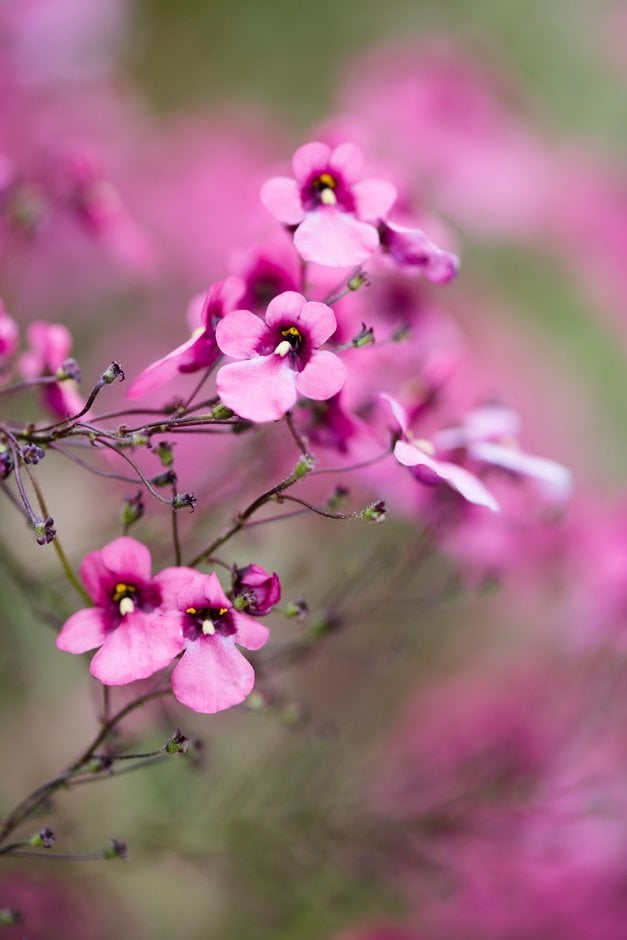Diascia personata
masked twinspur
A semi-evergreen perennial producing robust, upright stems to 1m tall clothed with linear to lance-shaped leaves. Terminal racemes of small pink flowers with darker pink centres are borne over a long period from late spring into autumn
Size
Ultimate height
0.5–1 metresTime to ultimate height
2–5 yearsUltimate spread
0.1–0.5 metresGrowing conditions
Moisture
Moist but well–drained, Well–drainedpH
Acid, Alkaline, NeutralColour & scent
| Stem | Flower | Foliage | Fruit | |
| Spring | Pink | Green | ||
|---|---|---|---|---|
| Summer | Pink | Green | ||
| Autumn | Pink | Green | ||
| Winter | Green |
Position
- Full sun
- Partial shade
Aspect
South–facing or West–facing or East–facing
Exposure
Exposed or Sheltered Hardiness
H4Botanical details
- Family
- Scrophulariaceae
- Native to GB / Ireland
- No
- Foliage
- Semi evergreen
- Habit
- Bushy
- Genus
Diascia can be annuals or semi-evergreen perennials, usually making a mat of neat foliage with racemes of cup or bell-shaped flowers, usually in shades of pink, and each with two short spurs
- Name status
Correct
- Plant range
- S Africa (E Cape)
How to grow
Cultivation
Grows best in fertile, moist but well-drained soil in full sun
Propagation
Propagate by seed or by taking softwood cuttings in summer
Suggested planting locations and garden types
- City and courtyard gardens
- Cottage and informal garden
- Patio and container plants
- Flower borders and beds
Pruning
Deadhead to prolong flowering
Pests
Diseases
Generally disease-free
Get involved
The Royal Horticultural Society is the UK’s leading gardening charity. We aim to enrich everyone’s life through plants, and make the UK a greener and more beautiful place.
